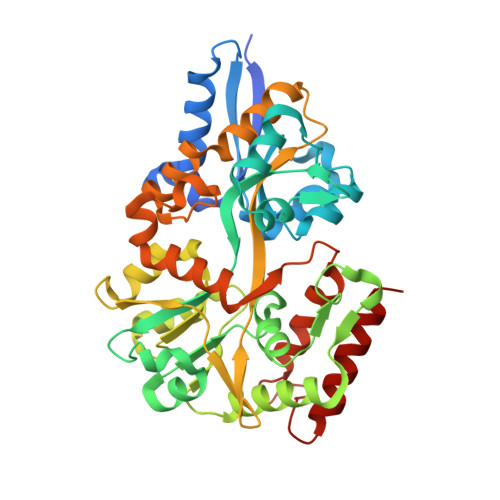Molecular details of a starch utilization pathway in the human gut symbiont Eubacterium rectale.
Cockburn, D.W., Orlovsky, N.I., Foley, M.H., Kwiatkowski, K.J., Bahr, C.M., Maynard, M., Demeler, B., Koropatkin, N.M.(2015) Mol Microbiol 95: 209-230
- PubMed: 25388295
- DOI: https://doi.org/10.1111/mmi.12859
- Primary Citation of Related Structures:
4UA8, 4UAC - PubMed Abstract:
Eubacterium rectale is a prominent human gut symbiont yet little is known about the molecular strategies this bacterium has developed to acquire nutrients within the competitive gut ecosystem. Starch is one of the most abundant glycans in the human diet, and E. rectale increases in vivo when the host consumes a diet rich in resistant starch, although it is not a primary degrader of this glycan. Here we present the results of a quantitative proteomics study in which we identify two glycoside hydrolase 13 family enzymes, and three ABC transporter solute-binding proteins that are abundant during growth on starch and, we hypothesize, work together at the cell surface to degrade starch and capture the released maltooligosaccharides. EUR_21100 is a multidomain cell wall anchored amylase that preferentially targets starch polysaccharides, liberating maltotetraose, whereas the membrane-associated maltogenic amylase EUR_01860 breaks down maltooligosaccharides longer than maltotriose. The three solute-binding proteins display a range of glycan-binding specificities that ensure the capture of glucose through maltoheptaose and some α1,6-branched glycans. Taken together, we describe a pathway for starch utilization by E. rectale DSM 17629 that may be conserved among other starch-degrading Clostridium cluster XIVa organisms in the human gut.
Organizational Affiliation:
Department of Microbiology and Immunology, University of Michigan Medical School, Ann Arbor, MI, 48109, USA.


















